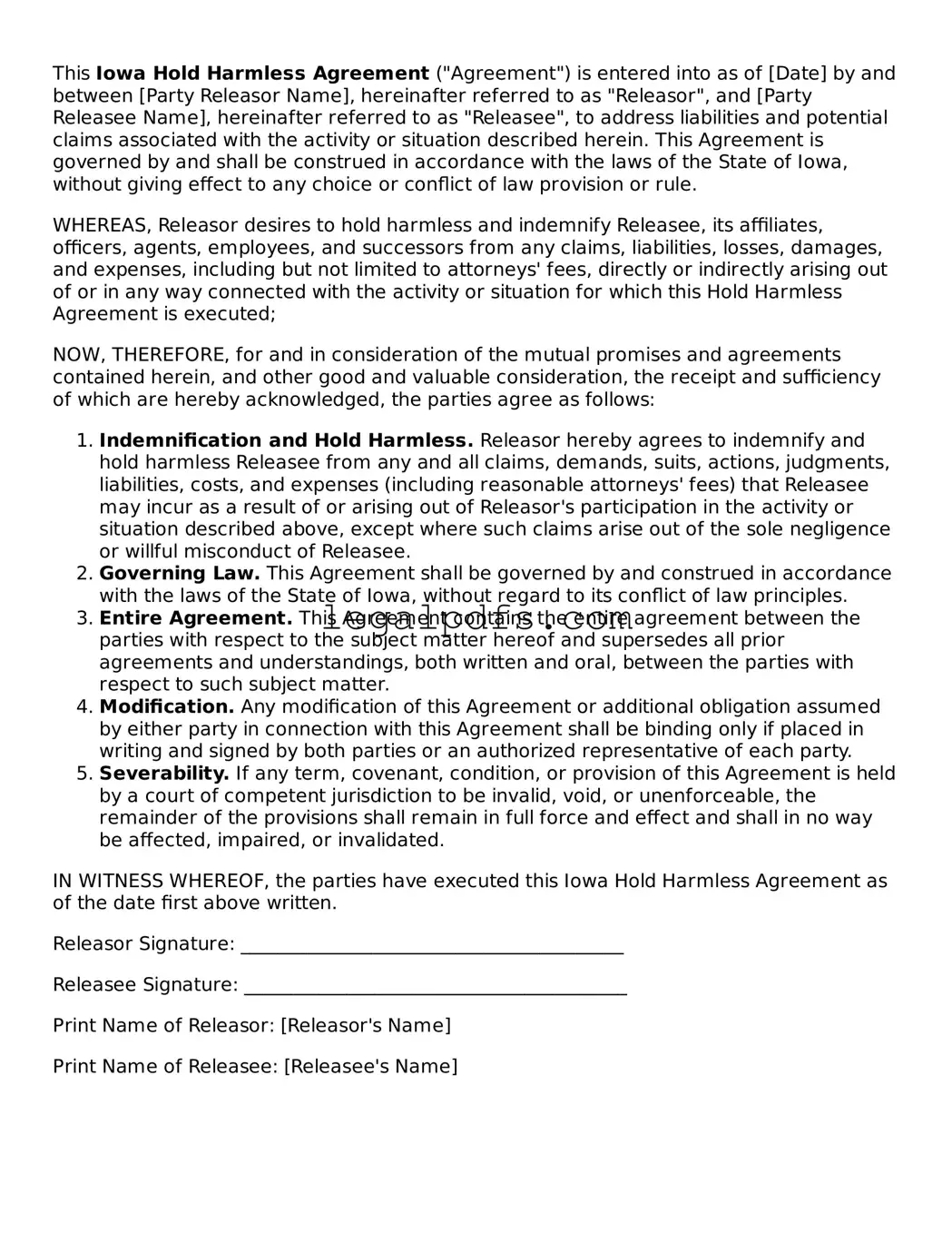What is a Hold Harmless Agreement in Iowa?
A Hold Harmless Agreement in Iowa is a legal document that one party signs to agree not to hold the other party liable for any injuries, damages, or losses that might occur during the execution of a certain activity, project, or event. This type of agreement is commonly used in situations where there is a potential for risk or harm, and it helps protect individuals, businesses, or entities from legal claims or lawsuits.
Who needs a Hold Harmless Agreement in Iowa?
Anyone involved in organizing, managing, or participating in activities that carry potential risks could benefit from a Hold Harmless Agreement. This includes contractors, property owners, event organizers, and businesses, among others. Such agreements are particularly important for activities like construction, special events, or any scenario where individuals are exposed to potential physical or financial harm.
What are the key components of a Hold Harmless Agreement?
A comprehensive Hold Harmless Agreement should include the identities of the parties involved, a detailed description of the activity or event, the specific risks involved, and the scope of the protection against liability. It should also outline the duration of the agreement and any conditions or limitations. Signatures of all parties involved are crucial to validate the agreement.
Is a Hold Harmless Agreement legally enforceable in Iowa?
Yes, a properly drafted Hold Harmless Agreement is legally enforceable in Iowa, provided it meets all state requirements and does not contradict public policy. The agreement must be clear, specific, and entered into without coercion. Both parties should fully understand the terms and the scope of the agreement for it to be considered valid and enforceable.
Does a Hold Harmless Agreement completely eliminate liability?
No, a Hold Harmless Agreement does not completely eliminate liability. It can significantly reduce the risk of being held financially responsible for certain incidents, but it cannot protect against all forms of liability, especially in cases of negligence or intentional harm. Each agreement's effectiveness will depend on its wording and the specific circumstances it covers.
Can I write a Hold Harmless Agreement myself or do I need a lawyer?
While it is possible to draft a Hold Harmless Agreement on your own, especially with templates or forms available, it is strongly advised to consult with a lawyer. A legal professional can help ensure that the agreement is tailored to the specific situation, complies with Iowa law, and provides the intended protection. An expertly crafted agreement is more likely to hold up in court if challenged.
How long does a Hold Harmless Agreement last in Iowa?
The duration of a Hold Harmless Agreement in Iowa depends on the terms set forth in the agreement itself. Some agreements may be event-specific and last for the duration of an activity, while others may persist for a longer period or until a specific condition is met. It's important to clearly specify the agreement's effective dates or conditions for termination within the document.
Are there any situations where a Hold Harmless Agreement might not be appropriate?
Yes, there are situations where a Hold Harmless Agreement may not be appropriate or enforceable, such as when the agreement attempts to protect against liability for illegal activities, gross negligence, or willful misconduct. Additionally, in some cases, public policy considerations may limit the enforceability of such agreements. It's important to consult with legal counsel to determine the appropriateness and enforceability of a Hold Harmless Agreement based on the specific circumstances.
